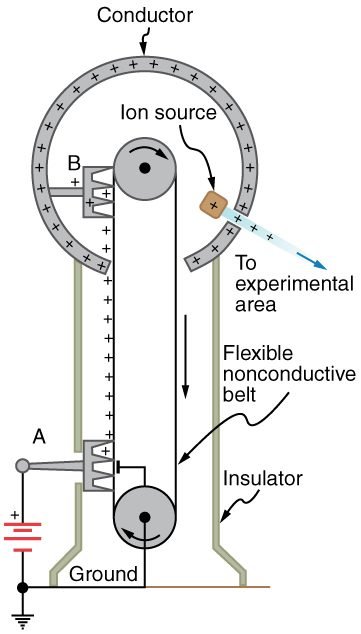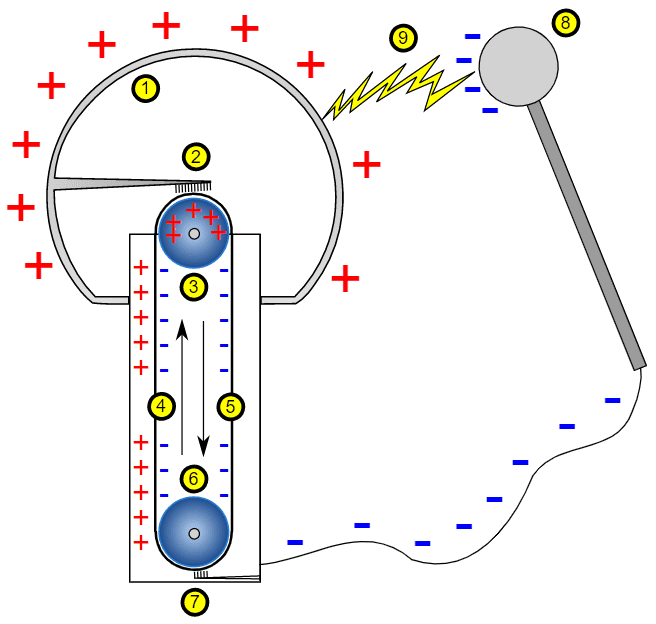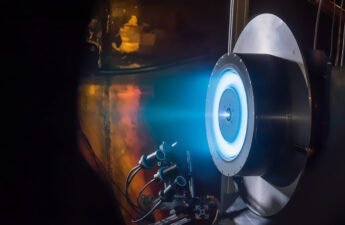The Van de Graaff generator was invented in 1929, by the American engineer Robert Jemison Van de Graaff and can produce millions of volts.
The triboelectric effect
This is the principle behind the Van de Graaff generator. When two materials rub against each other, they become electrified. One with a negative charge (excess of electrons) and other with a positive charge (lack of electrons). Who never rubbed a Bic pen to attract small pieces of paper?

The operation
In the below part, an electric motor turns a pulley and a conductive brush is on friction with a belt linked to the pulley, one side of belt becomes positively charged. The brush is connected to the positive pole of a high voltage direct current (DC) power source. However, not all generators have a DC source. Inside the conductive dome, another brush receives positive charges brought by the belt and transfers them to the dome, where they are uniformly spread.

The ion source serves to create a beam of positive particles for experiments and research. The positive charges on the dome create an electric field, ionizing the air, creating the corona effect. More detailed explanation will be in another post.

When somebody touches the generator dome above an insulating material, avoiding direct contact with ground, the person has the same positive charge as the generator. As equal signal charges repel each other, electrified strands of hair from the same signal repel each other and get ruffled.
Van de Graaff generator and nuclear research
The particle accelerators need high voltages to accel electric charged particles, to collide with a sample, producing nuclear reactions. Nowadays, Pelletron accelerators are used to speed up electrified particles.
A Van de Graaff generator in operation
This video on my Youtube channel shows a Van de Graaff generator from WEG technology museum, in Jaraguá do Sul, Santa Catarina state, Brazil.
Posts about my visit to this interesting museum.
WEG museum of science and technology (Part 1)Click here
WEG museum of science and technology (Part 2)Click here
Remember that the posts didn’t show all of museum’s exhibitions.



